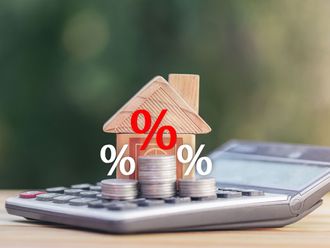After a decade of near zero interest rates, concerns have been raised that asset prices have been distorted by “cheap money”. In the last year, asset prices globally have responded by selling off.
From developed to emerging markets and in nearly all asset categories, investors have recorded flat to negative asset appreciation as the world gets ready for higher interest rates. Nowhere has this trend been more apparent than in luxury real estate where returns have not only been negative, dynamic return correlations have been the highest in recorded history (0.68 over the last two years).
This has led to questions of what the markets have been signalling, and what this implies for domestic real estate investors.
To assess a framework of valuation, perhaps the best metric has been the Tobin’s Q ratio, which measures, as a ratio, the market value to replacement value (what it would cost to build them today) of assets.
Over time, this has proved to be the single best ratio for measuring the over/under valuation of financial markets (equity and real estate). When we apply the ratio to Dubai real estate, interesting results start to appear, perhaps explaining the nature of price action that has been witnessed in the last year.
When Dubai’s real estate markets peaked in early 2014, the average citywide ratio was 1.3. However, this masked underlying dynamics of the two-tiered market place that had developed in the city.
Prices at the top end
Looking at the luxury villa space, for example, the ratio peaked at 2.3 in early 2014, whereas in the upper mid-income villa communities, the ratio was a more modest 1.2. This was perhaps the single greatest measure that explained the overvaluation of luxury real estate assets.
Since then, predictably, prices at the top end have fallen by approximately 25 per cent, whereas in the mid-end, prices have retreated by slightly less than half, or approximately 11 per cent.
Even after the fall, blue-ribbon luxury villa communities have an average Q ratio of 1.6, whereas, in the rest of the city, the ratio has remained stable at 1.2, suggesting that the former has further room to fall.
How does this compare to global real estate markets? In New York for example, prices of luxury condos stagnated and in the last six months even started to fall in certain areas. This coincided with the peaking of the Q ratio of such apartments at 1.6.
Similar trends have been witnessed in the high-end areas of London, Paris, Munich, Hong Kong and Singapore; in each case prices have started falling. And in each case it coincided with the ratio climbing above 1.5. It is important to note here that even as prices at the top-end have started to fall, mid-income priced communities in these areas have remained relatively steady.
Again, in each instance, the Q ratio has hovered at the 1.2-1.3 levels.
Investors over the last decade, perhaps more so than at any time in recorded financial history, have bid up assets in luxury markets as a trifecta of demand stimulus inflated asset prices.
These being the monetary stimulus being offered by the central banks, high and rising oil prices and a falling US dollar.
Overvalued
Developers in Dubai, as well as the world over, responded by increasing the supply of such “trophy” assets relishing the prospect of higher capital gains, and increased the stock of such units. However, over the last year, all three factors have unwound.
Consequently luxury real estate asset prices have stagnated or fallen across the globe, as these were the assets that were overvalued the most. This has caused sentiments to sour, and in some cases led to a softening of the mid-income markets as well.
It is important to note the valuation measures suggest that there is little room to fall in many of these markets, and prices are expected to be “sticky”, especially in markets such as Dubai, where there has been a shortage of mid-income offerings.
Perhaps this is where the investment horizon is critical for investors and end-users alike. An examination of global real estate return data over the last three decades reveals that broadly the markets go through four regimes of price action.
Factors
These are categorised as “normal market”, “real estate premium markets”, “surge or dream markets” and “negative or nightmare markets”. When Dubai is looked through the prism of these regimes, two factors stand out clearly.
The first is that since 2002, the luxury segment has for the first time decoupled from the overall market and has entered a negative phase, whereas the rest is still undergoing a normal market cycle. It turns out that Dubai’s story is synonymous with the world’s real estate story, and investors who have taken note and adjusted asset allocations accordingly are likely to continue to prosper.
The writer is the Managing Director of Global Capital Partners.











